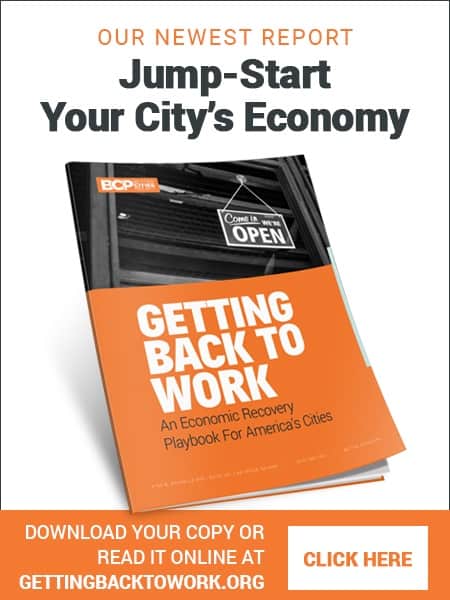Since the COVID-19 pandemic, there have been a lot of stories about the bleak future of cities. You’ve seen them. We at BCP have certainly seen them. We don’t believe them; we remain bullish on the future of cities. So it was a legitimate joy to read the essay, The Comeback City: How New York City Overcame Failed Policies by Believing in People. One need only recall movies such as “Deathwish,” “Taxi Driver” and “Escape from New York” to remember how popular culture imagined the city in the late 1970s.
The essay’s author, Robert Doar, spent almost two decades on the front lines of New York City’s welfare and social services programs, from 1995 as a deputy commissioner in the city’s child support enforcement program through his tenure on the city’s Human Resources Commission ending in 2014. That was also a period of tremendous positive change in New York that is a must-read for anyone tackling similar challenges in urban centers across America.
The essay is brief yet full of information, and it’s recommended in its entirety. Doar’s thesis is that “from 1994 to 2006, New York’s leaders transformed the city from a nearly bankrupt basket case, a cautionary tale, into an engine of opportunity and a model of urban governance.” Consider the following quotes from Doar’s piece:
Welfare
- “In 1969, New York’s poverty rate was 14.5 percent, but it had increased to over 25 percent by the mid-1980s.”
- “From 1995 through 2013, the city’s cash-welfare caseload shrank from 1.1 million to 347,000 recipients.”
- “By 2013, the city’s child poverty rate was over 10 points lower than it had been.”
Education
- As a result of education policy in the late 1960’s, “graduation rates collapsed to around 50 percent and graduation itself demanded very little.”
- As a result of subsequent education reforms, “The high school graduation rate increased 18 percent from 2004 through 2012.”
Doar’s suggested solutions aren’t easy, and in many cases require an about-face on how many view success, but one cannot argue with New York’s results over a relatively short period.









